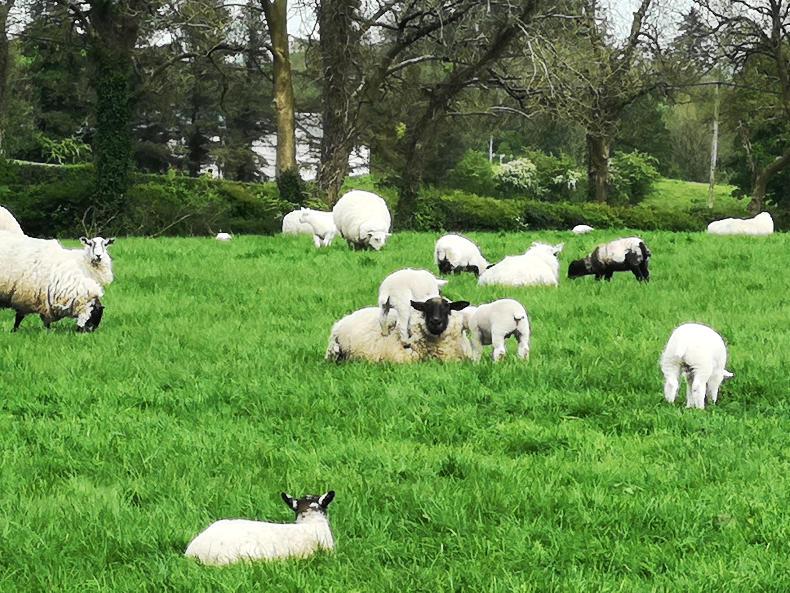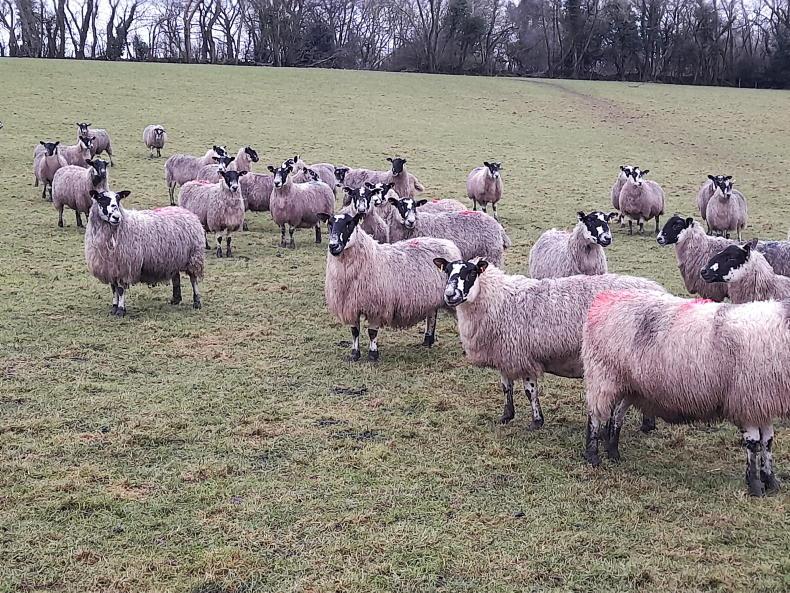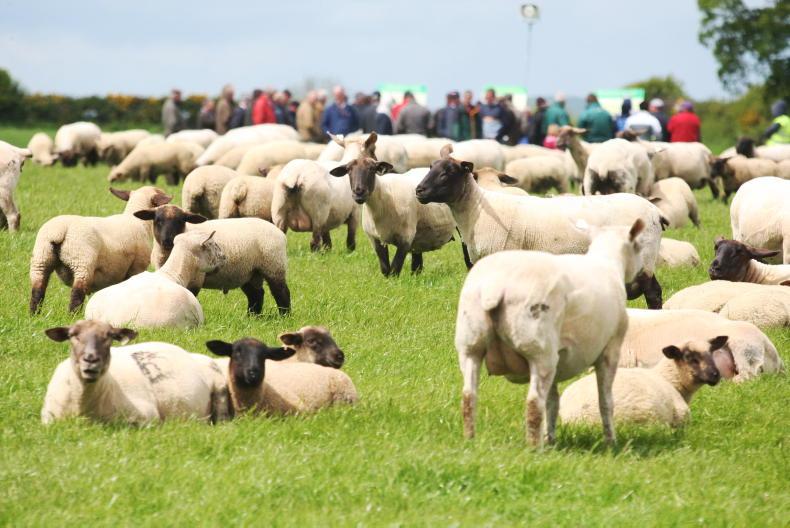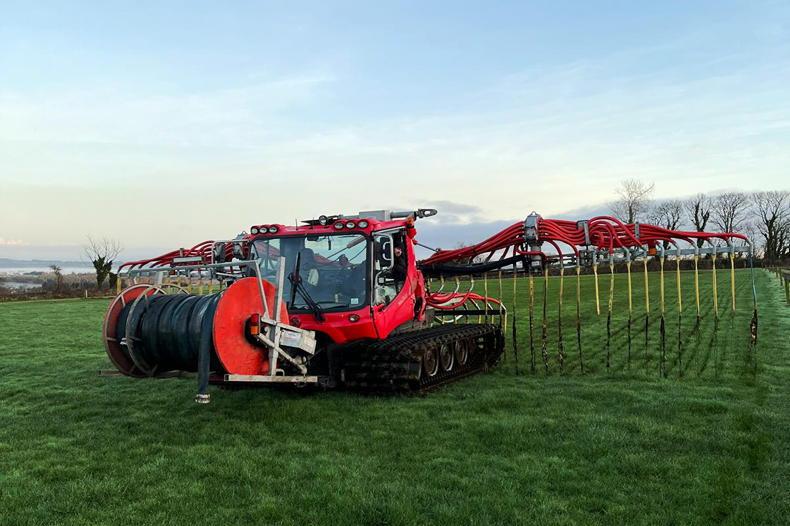A few months ago, I had the best scanning results in my sheep that I’ve ever had. It was well over 200%, with a lot of ewes carrying threes and fours. At the time, I didn’t know if it was going to be a blessing or a curse.
Now safely on the other side of lambing, it’s a good time to reflect and consider my options for next year.
The scanning was pretty much spot on, with just a few extra lambs in some of the ewes. It allowed for the batching of ewes according to the number of lambs that they were carrying and meant we could feed the ewes proportionately to their requirements.
In preparation for lambing, the shed was set up with 22 individual pens, and we purchased an automatic lamb feeder to feed the spare lambs.
I had also pushed back lambing by about 10 days, when compared with other years. The aim was to have as many cows as possible calved and sorted out before lambing would start. Secondly, I was hoping to have a good supply of grass for the ewes and lambs. Thirdly, I was hoping to hit some good weather and get the sheep out as quickly as possible.
Challenge
Well the first two worked out grand, but the last didn’t go great. The weather was super before we started lambing, but once the first lambs were born it went downhill rapidly, and the initial couple of weeks were a challenge.
In the first week, it rained most of the time. Lambs came thick and fast, and the 22 pens were filled quickly. The pressure was on. We had to quickly make up more individual and group pens.
As sods law would have it, a lot of the singles came at the start when we had no surplus lambs to foster on. The first four that lambed were three singles and one twin.
We lost plenty of lambs (too many for my liking), but no more than when we had smaller crops of lambs
After that we tried not to let anything out with a single. We tried wet fostering, foster crates and removing their own lamb and replacing them with two adopted lambs. All with varying degrees of success.
We lost plenty of lambs (too many for my liking), but no more than when we had smaller crops of lambs. If anything, it was probably slightly less than other years.
There were also a few funny things that happened. One that sticks out was a ewe that was scanned for triplets, but just wouldn’t eat any meal, no matter what I tried. Needless to say, she lost condition and lambed weakly lambs and didn’t mother them very well. She also had very little milk and stopped eating silage. I eventually gave in, took the lambs from her and put the ewe outside in a field with a couple of calves. She never even looked for the lambs, but the next morning (when I was feeding the calves) she pushed into the trough and started to eat meal. Obviously, she thought she was a calf and not a sheep.
Pet lambs
We have sold some pet lambs and the rest are on the automatic lamb feeder, which is working well and certainly eases the workload. We have over two lambs per ewe alive at the moment. The next challenge will be to sell them.
I believe that we must have a ewe that will easily produce and rear two lambs for every ewe that goes to the ram
I would argue that a higher lambing percentage doesn’t necessarily bring you more problems, but it does bring you slightly more work. So, is it worth it?
Without a shadow of a doubt it is worthwhile for our farm business, given that there is the labour available to help get through this peak period.
On this farm, I believe that we must have a ewe that will easily produce and rear two lambs for every ewe that goes to the ram.
For me, it doesn’t matter what breed or cross that you choose, as long as they do that job. I will continue to push my flock to produce as many lambs as possible next season.
Read more
Watch: technology to take the strain of heat detection
Farmer Writes: gearing up for lots of spring lambs
A few months ago, I had the best scanning results in my sheep that I’ve ever had. It was well over 200%, with a lot of ewes carrying threes and fours. At the time, I didn’t know if it was going to be a blessing or a curse.
Now safely on the other side of lambing, it’s a good time to reflect and consider my options for next year.
The scanning was pretty much spot on, with just a few extra lambs in some of the ewes. It allowed for the batching of ewes according to the number of lambs that they were carrying and meant we could feed the ewes proportionately to their requirements.
In preparation for lambing, the shed was set up with 22 individual pens, and we purchased an automatic lamb feeder to feed the spare lambs.
I had also pushed back lambing by about 10 days, when compared with other years. The aim was to have as many cows as possible calved and sorted out before lambing would start. Secondly, I was hoping to have a good supply of grass for the ewes and lambs. Thirdly, I was hoping to hit some good weather and get the sheep out as quickly as possible.
Challenge
Well the first two worked out grand, but the last didn’t go great. The weather was super before we started lambing, but once the first lambs were born it went downhill rapidly, and the initial couple of weeks were a challenge.
In the first week, it rained most of the time. Lambs came thick and fast, and the 22 pens were filled quickly. The pressure was on. We had to quickly make up more individual and group pens.
As sods law would have it, a lot of the singles came at the start when we had no surplus lambs to foster on. The first four that lambed were three singles and one twin.
We lost plenty of lambs (too many for my liking), but no more than when we had smaller crops of lambs
After that we tried not to let anything out with a single. We tried wet fostering, foster crates and removing their own lamb and replacing them with two adopted lambs. All with varying degrees of success.
We lost plenty of lambs (too many for my liking), but no more than when we had smaller crops of lambs. If anything, it was probably slightly less than other years.
There were also a few funny things that happened. One that sticks out was a ewe that was scanned for triplets, but just wouldn’t eat any meal, no matter what I tried. Needless to say, she lost condition and lambed weakly lambs and didn’t mother them very well. She also had very little milk and stopped eating silage. I eventually gave in, took the lambs from her and put the ewe outside in a field with a couple of calves. She never even looked for the lambs, but the next morning (when I was feeding the calves) she pushed into the trough and started to eat meal. Obviously, she thought she was a calf and not a sheep.
Pet lambs
We have sold some pet lambs and the rest are on the automatic lamb feeder, which is working well and certainly eases the workload. We have over two lambs per ewe alive at the moment. The next challenge will be to sell them.
I believe that we must have a ewe that will easily produce and rear two lambs for every ewe that goes to the ram
I would argue that a higher lambing percentage doesn’t necessarily bring you more problems, but it does bring you slightly more work. So, is it worth it?
Without a shadow of a doubt it is worthwhile for our farm business, given that there is the labour available to help get through this peak period.
On this farm, I believe that we must have a ewe that will easily produce and rear two lambs for every ewe that goes to the ram.
For me, it doesn’t matter what breed or cross that you choose, as long as they do that job. I will continue to push my flock to produce as many lambs as possible next season.
Read more
Watch: technology to take the strain of heat detection
Farmer Writes: gearing up for lots of spring lambs










SHARING OPTIONS